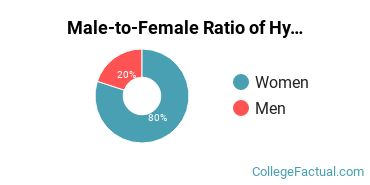 by our College Data Analytics Team
by our College Data Analytics TeamHydrology & Water Resources Science is a concentration offered under the geological and earth sciences major at Colorado School of Mines. We’ve pulled together some essential information you should know about the doctor’s degree program in hydrology and water resources science, including how many students graduate each year, the ethnic diversity of these students, whether or not the degree is offered online, and more.
If there’s something special you’re looking for, you can use one of the links below to find it:
Learn about start dates, transferring credits, availability of financial aid, and more by contacting the universities below.
Out-of-state part-time graduates at Mines paid an average of $2,075 per credit hour in 2019-2020. The average for in-state students was $925 per credit hour. The following table shows the average full-time tuition and fees for graduate student.
| In State | Out of State | |
|---|---|---|
| Tuition | $16,650 | $37,350 |
| Fees | $2,450 | $2,450 |
Online degrees for the Mines hydrology and water resources science doctor’s degree program are not available at this time. To see if the school offers distance learning options in other areas, visit the Mines Online Learning page.
About 66.7% of the students who received their PhD in hydrology and water resources science in 2019-2020 were women. This is higher than the nationwide number of 37.5%.

None of the hydrology and water resources science doctor’s degree recipients at Mines in 2019-2020 were awarded to racial-ethnic minorities*.

| Race/Ethnicity | Number of Students |
|---|---|
| Asian | 0 |
| Black or African American | 0 |
| Hispanic or Latino | 0 |
| Native American or Alaska Native | 0 |
| Native Hawaiian or Pacific Islander | 0 |
| White | 3 |
| International Students | 0 |
| Other Races/Ethnicities | 0 |
You may also be interested in one of these majors related to hydrology and water resources science.
| Related Major | Annual Graduates |
|---|---|
| Geochemistry | 1 |
| Geophysics & Seismology | 8 |
View All Hydrology & Water Resources Science Related Majors >
*The racial-ethnic minorities count is calculated by taking the total number of students and subtracting white students, international students, and students whose race/ethnicity was unknown. This number is then divided by the total number of students at the school to obtain the racial-ethnic minorities percentage.
More about our data sources and methodologies.